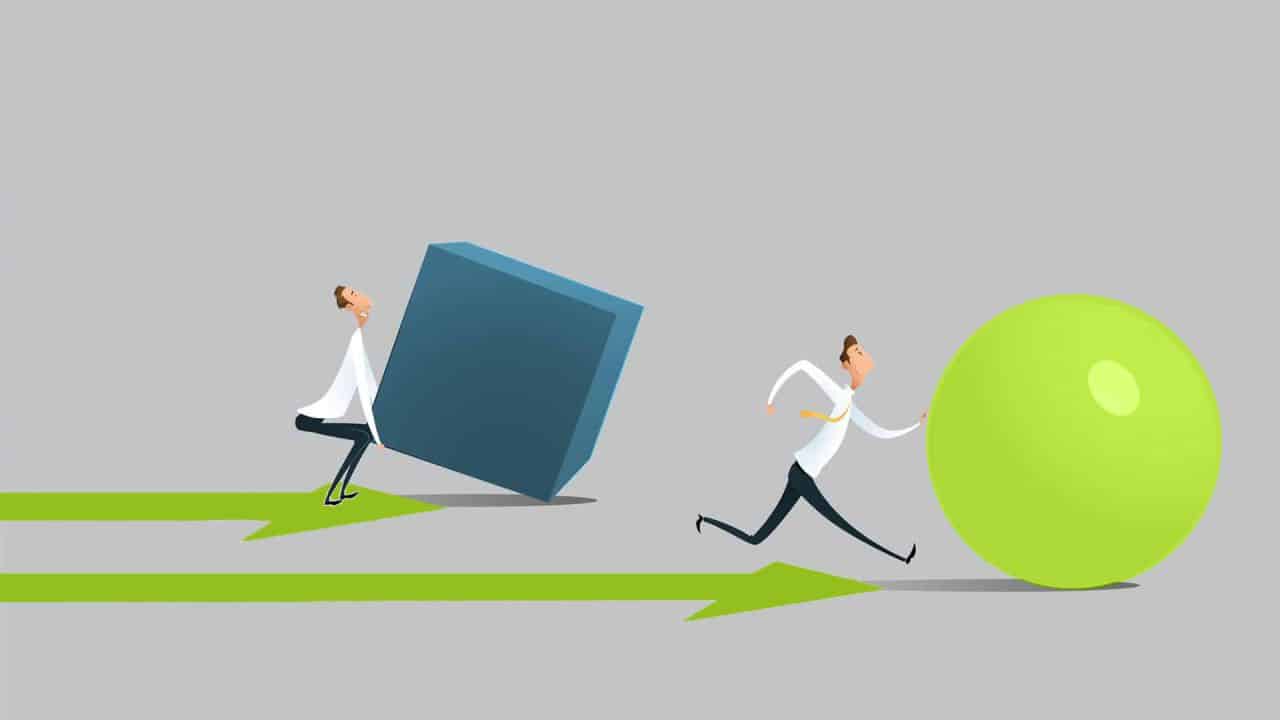Doubling Down on Productivity and Efficiency?

How Category Design Drives Sustained Efficiencies
With the IMF recently forecasting the lowest global growth in 40 years, or major corporates cutting resources and stating the need for “a year of efficiency” (FB’s Zuckerberg for example) and venture capital drying up, it’s clearly a time when productivity and efficiency is at the top on the management agenda.
It’s a time where lean efficiencies are key to not only surviving, but for out-positioning the competition. It’s also a critical time when you and your leadership team need to understand the deep efficiencies that Category Design delivers across the organization.
So firstly, what is Category Design?
The methodology and discipline of Category Design enables you to define the market and category to your advantage. This not only out-positions your competition but also unleashes completely new revenue and economic upside.
Category Design begins with the deep exploration of “the problem” your organization can solve. What is this unique problem that has never been adequately described? Perhaps it’s an evolution of the current state and problem, or perhaps it’s a problem we didn’t even know we had.
Internal Impact
This deep exploration and thinking drives a powerful internal alignment across your team. Once you land on the new problem and its articulation, it becomes a key inflection point for your own personal leadership, and the team.
It’s a deeper clarity on what we are solving today and into the future. It’s either a fine-tuning of your overall strategy, or a complete epiphany and makeover of it. It’s an entirely new category that is being defined, with the strategic intent of your company to be the de-facto leader as the “Category King”.
“Those who tell stories, rule the world.”
Imagine now the power of an invigorated story and point of view around the problem that the company is solving. Internal Comms sees not only a major boost and clarity around the united objective and strategy of the company, but this story becomes incredibly viral and consistent across the team and any internal communications.
Vision, Mission and Brand Values are all still there (but may see some modification) but it is the laser-like focus on the problem that people and teams rally around. What are we solving and why does it make a difference?
Now apply this to recruiting. As a candidate considers your company as a team and employer the team’s passion is abundantly clear, with clarity around “the problem” that is core to the company and its ambitions. It sets you apart from other companies, who have washed-out, unclear messages around what the team is collectively working towards. It makes you and team incredibly viral with your message and Point of View.
“Don’t just design your future, build it.”
In this journey to describe and solve the problem (and to be the Category King), how does your overall solution and product roadmap need to evolve? This is the Blueprint stage of the Category Design Methodology. This one-page visualization shows what successive waves of innovation and product availability will be catalyzed by the problem focus. It brings together product, engineering, sales, marketing, channels, leadership…to understand and clarify as a team around “what” will be delivered “when”.
External Impact
With a clear problem, Category and internal Blueprint defined, the key realization is that you cannot be a Category and be only one company. The Category is a new Ecosystem, that needs to be visualized and described. What companies / technologies / API’s / services / consumers / channel partners / government agencies / NGO’s / analysts / media (and the list can go on) are part of this Ecosystem?
How can we visualize this Ecosystem? What shape / diagram / flow / layers…. does it have? How does it enhance and tell the story around the Category?
This is a major result and “asset” from the Category Design process: not only a visualization of the Ecosystem, but a catalyzation of strategy around it.
Consistently we see clients going through this step of the design-thinking and having a set of epiphanies on the not only the components of the Ecosystem, but key targets and players who have been overlooked up to this point.
The ecosystem also drives deep thinking and efficiencies for accountability (who owns what “slice” for example?). And how will we track and measure our engagement and outcomes with members of our ecosystem?
One particular slice of the ecosystem is key media. Which journalists and media orgs do we need to focus on and develop deeper relationships with? This is especially effective as it is armed up with a much clearer, compelling Point of View as part of your regular engagement and pitching to media. More effective and productive PR / Media Relations is a significant impact and outcome (such as earned media) from Category Design (and can be measured).
Similarly, Analyst Relations receives a major efficiency boost. Which analysts are you targeting and why? How do we prioritize? And Analysts, like media, are tired of product and company centric presentations. What is the bigger idea and Category that you are presenting? How does your Blueprint and Ecosystem Map reinforce your story and illustrate the clarity of your strategy?
Having a compelling and differentiated Point of View, clear Blueprint, and Ecosystem Strategy are incredible accelerants for your go-to-market capability. Further fuelling this however is the Lightning Strike methodology. This proven GTM efficiency and outcomes-driver is based on a concentrated burst of GTM activities. In most cases this intense concentration occurs over a two to three week period and involves all members of the company to participate and support. Marketing of course is a central player and coordinator, but a “strike” enables the senior leadership to engage the entire company for teamwork and a clear set of metrics and targets.
Every Lightning Strike (likely every 6 months) that you run will be unique, but will have your Point of View at the heart of your content; and will have a clarity of what parts of your Blueprint you are announcing and need to be market-ready; along with your Ecosystem targets and KPIs.
Your strike will have creative aspects, tactical components, key marketing investments, target customer engagement and many other components, but this intense burst will move the needle for awareness as well as pipeline impact. And because it is so defined in terms of timing, duration and metrics, you will be able to measure the impact and ROI very clearly.
“The whole is greater than its parts”
Taken in total, these 8 forces across internal and external impact are thus direct outcomes from Category Design and create an ongoing efficiency-flywheel effect:
| Internal | External |
| Alignment and Strategy | Ecosystem |
| Internal Comms | PR / Media Relations |
| Virality and Recruiting | Analyst Relations |
| Blueprint | GTM / Lightning Strike |
But it is, as per Aristotle’s quote, greater than just the sum of the above parts. Category Design challenges you and your team to not only think bigger, but differently. It’s your opportunity to lead, not follow.
And think about this: You will always be in a Category.
The question then is: Do you want to position, or be positioned?
If you don’t define the problem and Category, then someone else will.
Also published on Medium
Solutions
The Out-Position team has experience and a track-record that you can leverage and catalyse for your category strategy and design.
Contact us
We work alongside you for this design-thinking process, from the problem clarity and category defined, to a powerful point of view.
